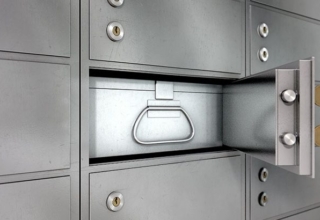
Aerial seeding is a process of seed dispersal that uses a plane or helicopter to distribute seeds over a large area. This method of seed dispersal is often used in agricultural and forestry applications, as it allows for a more efficient and cost-effective way to cover large areas.
There are many benefits to aerial seeding, including the ability to target specific areas, the ability to sow at a higher rate, and the ability to sow in difficult-to-reach areas. In this blog post, we will explore the benefits of aerial seeding in more detail and discuss how this method of seed dispersal can be used in your agricultural or forestry operation.
Table of Contents
What is aerial seeding?
Aerial seeding is a process of spreading seeds over an area from the air. The most common method is to use an airplane or helicopter to drop the seed, but there are also drones and other methods that can be used.
There are many benefits of aerial seeding, including:
It is a very efficient way to cover large areas with seeds.
The seed is evenly distributed and can be spread over difficult terrain.
Aerial seeding can be done before or after the planting season.
It can help to improve the germination rate of the seed.
The benefits of aerial seeding
Aerial seeding has many benefits over traditional ground seeding methods. Perhaps the most obvious benefit is that it covers a much larger area in a shorter amount of time. This can be especially helpful when trying to seed a large piece of property or an area that is difficult to access with ground equipment.
Another big benefit of aerial seeding is that it can help reduce the overall cost of a seeding project. When you factor in the cost of equipment, fuel, and labor, aerial seeding can often be done for less money than other methods.
Aerial seeding also has some unique benefits when it comes to germination rates and successful establishment. Because the seed is evenly distributed over the entire area, there is no need to worry about areas being missed or getting too much seed in one spot. This even distribution also helps ensure that the seeds have good contact with the soil, which encourages faster germination rates.
How does aerial seeding compare to traditional methods?
Aerial seeding is a process of dispersing seeds from an aircraft, which can cover a larger area than traditional ground seeding methods. Aerial seeding has been used for decades in agricultural and forestry applications and is now being explored as a potential solution to crop loss.
Aerial seeding has several advantages over traditional ground seeding methods. First, it can cover a much larger area in a shorter period. Second, the distribution of seeds is more even, which can improve germination rates. Third, aerial seeding can be used in areas that are difficult to access with ground-based equipment.
There are also some disadvantages to aerial seeding. One is that it is more expensive than traditional methods. Another is that the quality of the seed mix is often lower than what would be used in a targeted application of ground seeding. Finally, there is always the risk that the wrong seeds will be dispersed into an area, which can create problems for native ecosystems.
Overall, aerial seeding has the potential to be a useful tool for restoring or creating new crops, but it is important to consider the pros and cons before deciding whether or not to use this method.
The future of aerial seeding
Aerial seeding is a process by which crops are planted from an aircraft. The future of aerial seeding looks promising, as it has the potential to solve many problems associated with crop loss.
Aerial seeding can be used to plant crops in areas that are difficult to access, such as steep slopes or remote locations. This method of planting also allows for a more even distribution of seeds, which can result in higher yields. Additionally, aerial seeding can be used to plant multiple crops in a single pass, which is not possible with traditional methods.
One downside of aerial seeding is the cost. However, as technology improves and more farmers adopt this practice, the cost is likely to decrease.
The future of aerial seeding looks promising. This technology has the potential to solve many problems associated with crop loss, and it can be used to plant crops in difficult-to-reach areas. With continued research and development, the cost of aerial seeding is likely to decrease, making this method of planting more accessible to farmers around the world.
How to get started with aerial seeding?
Aerial seeding is a great way to get started with your food forest garden. The first step is to find a spot that gets at least six hours of sunlight a day and has good drainage. Once you have found the perfect spot, it is time to start prepping the area. First, you will need to till the soil to loosen it up. Next, you will want to add some organic matter to the soil to help it retain water. Finally, you will need to create furrows in the soil for the seeds.
Once the area is prepared, it is time to start sowing the seeds. You will want to sow the seeds thinly so that they have plenty of room to grow. After sowing, you will need to lightly cover the seeds with soil and water them well. You should start seeing seedlings emerge within a few weeks.
As your seedlings grow, you will need to thin them out so that they are not competing for resources. You can either transplant them into other areas or simply pull them up and compost them. Once they are established, you can begin harvesting your aerial garden!
Conclusion
Aerial seeding has many benefits that make it an attractive option for farmers and landowners. It is less expensive than traditional methods, and it can cover a larger area in a shorter period. Additionally, aerial seeding helps to improve soil health and water retention, which can lead to increased crop yields.














